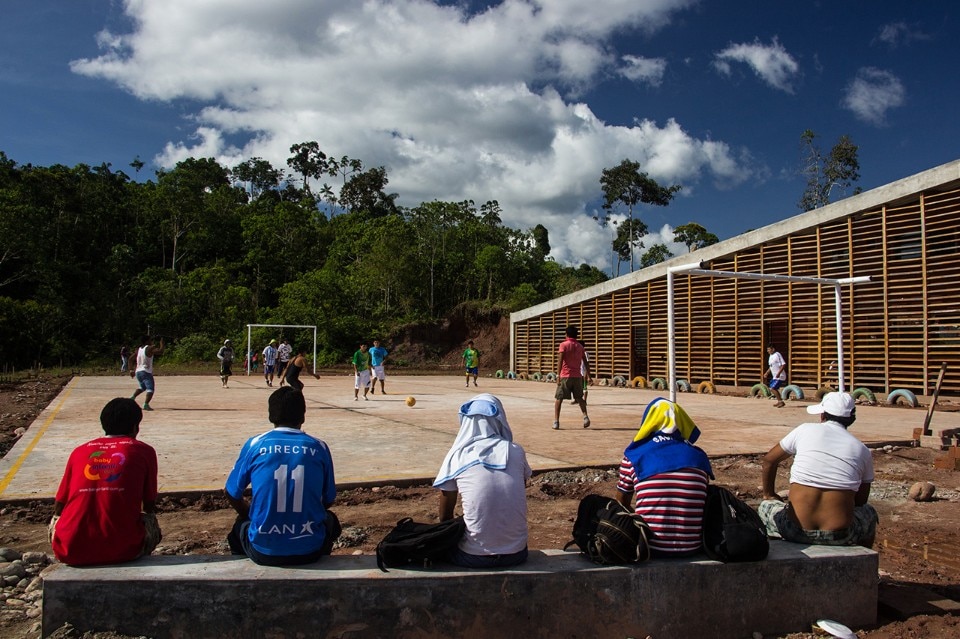
The soil survey revealed a backfill in the western part of the lot. Since the eastern part needed to have a more solid surface, it was proposed to construct a compact, longitudinal volume on the east side. The western side, the less resistant area, was intended for the schoolyard, sport’s court, and an area of greenery.
The volume is formed by two floors. In the center, a covered double height courtyard divides the school into two sections, separating functions. The northern part of the building is used for the classrooms and student restrooms. On the south side you can find the entrance hall, laboratories, library/multipurpose area, and teacher’s rooms.

Reinforced concrete was used for the main structure and handmade clay bricks for walls. The use of wood is limited to the roof structure and louvers on the east and west facades. The louver system favors indirect lighting, keeps the space ventilated, and protects the long hallways from rain. In the wallss, small louvered windows at the top of the rooms allow for hot hair escape and constant air replacement.
The hallway axis goes through the volume from north to south, allowing one to appreciate the longitudinal extension of the building. Alternation changes in the height and alternation of the lighting effects due to variation in the volumes create a visual contrasts of light and shadow.

The volume stretches upwards in the central part, generating a sharp fall towards the north and south ends. At both edges, above the restrooms, there are two tanks used to collect and store rainwater, which is used for the bathrooms and after use is purified by a trickling filter system and reused as irrigation water.
Architecture must adapt not only to geographical, morphological, and climatic conditions, but also to the cultural and social conditions of the community. The inauguration ceremony of the building is not the end, but only the beginning of a larger process of development. The school is not only a place to study, but also a meeting place and work place for the whole community.

Secondary School, Rural village of Santa Elena, Pangoa, Province of Satipo, Central Amazon Jungle (Peru)
Program: school building
Architects: Marta Maccaglia, Paulo Afonso
Development and execution: Marta Maccaglia (Asociación Semillas para el Desarrollo Sostenible)
Collaborators: Bosch Arquitectos
Funding: Costa Foundation
Partners: Procesadora del Sur S.A., Asociación VSP Generaciones; Autorità locali, Ministero dell’Educazione
General contractor: Constructor Javier Garcia Paucar
Engineering: Manuel Cárdenas Aspajo
Carpentry: Elias Martinez Ramos
Site area: 5.000 sqm
Built area: 700 sqm
Cost: 185,000 USD
Year: 2015












